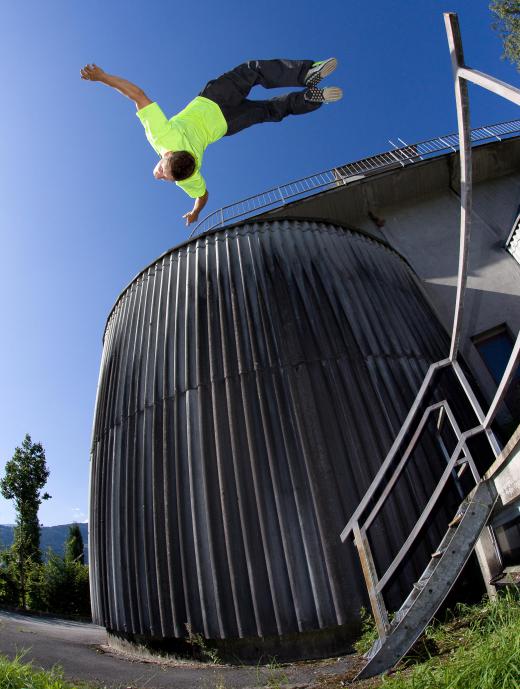Parkour, also known as free running, is an urban form of exercise where obstacles and man-made landmarks are used to perform acrobatics. When performing parkour, a person’s movements are fast and continuous. If only the hands are used to jump over or around an obstacle, that is called a vault. Just as there are many interpretations of parkour moves, there also are different types of vaults.
Vaults can be performed on any objects that can bear the athlete’s weight, such as park benches to retaining walls. The purpose of the vault is to quickly transition over an obstacle and land back on the feet. The athlete's goal is not only to clear the object but also to land as gently as possible. A good parkour vault landing is one that is soft and quiet. Having one foot in front of the other on the landing will allow the athlete to continue running with little to no pause.

One of the most fundamental parkour vaults is the lazy vault. This is a move that can be learned by beginners and is often used on railings, concrete walls and short fences. When approaching a waist-high obstacle such as a railing, the athlete should be at an angle instead of facing directly at the object. While bringing the knee that is closest to the obstacle up in the air, the hand closest to the object should briefly brace the body’s weight while both legs are brought over for a landing.
The monkey vault, also known as the Kong vault, gets its name from the animal it mimics. With a monkey vault, the athlete vaults over an obstacle by placing both palms on it and bringing the legs over with a swinging momentum. A variation of this parkour vault is the reverse monkey vault. This is when a 180-degree turn is added while the legs clear the obstacle. Although the reverse monkey vault might appear more complicated, it can sometimes make for a smoother transition to the ground.
A parkour vault can be as versatile as free running itself. Different names and have continued to be coined and moves created. It is the quick adaptation and fluid motion that is most challenging about learning parkour vault moves. In order to avoid injury or destruction of public property, it is important for athletes to learn slowly with easier moves, such as the lazy vault. With practice, a more advanced parkour vault will feel natural to the athlete, and improvisations can be made.
